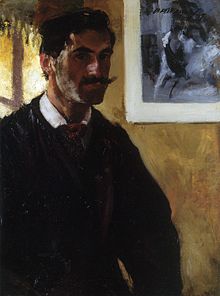ALFRED HENRY MAURER
1868-1932 Alfred Henry Maurer was one of the first American painters to be influenced by Fauvism and Cubism. Maurer was born in New York, New York, where his father, Louis Maurer, was a successful Currier & Ives lithographer and genre painter. After working as a lithographer and studying at the National Academy of Design, he went to Paris in 1897 and briefly attended the Academie Julian. He won the first prize at the Carnegie International in 1901 and his success appeared assured as other honors followed.
Alfred Henry Maurer was one of the first American painters to be influenced by Fauvism and Cubism. Maurer was born in New York, New York, where his father, Louis Maurer, was a successful Currier & Ives lithographer and genre painter. After working as a lithographer and studying at the National Academy of Design, he went to Paris in 1897 and briefly attended the Academie Julian. He won the first prize at the Carnegie International in 1901 and his success appeared assured as other honors followed.
Within a few years, the influence of Parisian art decisively changed his style. He became of friend of Gertrude and Leo Stein in 1904. Soon he was stimulated by the example of Matisse and the Fauves to paint landscapes and figures in thrusts of unusual raw color that conveyed an impulsive vitality. Alfred Stieglitz exhibited this work at his Gallery 291 in 1909 and 1910, and it was by paintings of Fauvist tendency that Maurer was represented at the Armory Show in 1913 and the Forum Exhibition in 1916. Through his contacts in Paris he also arranged for many of the foreign entries in the Armory Show.
Maurer returned permanently to the United States in 1914. By the end of World War 1 he was working in a Cubist manner of flat, overlapping, and interpenetrating planes. He produced a number of female heads and bust-length figures, sometimes single and sometimes paired, often with distorted features and intense, staring eyes. He also painted boldly colored and textured still lifes in which the forms were subjected to both Cubist and Expressionist distortions. Between 1920 and 1931, Maurer produced a large body of such works in oil, watercolor, and gouache. Uneven but frequently forceful, they received little attention in their day. After the closing of Steiglitz’ gallery in 1917, avant-guard artists such as Maurer found few opportunities to exhibit and little encouragement in America. Maurer was introverted and reticent, and he lived in the shadow of his father’s strong personality and popular success. Following his father’s death in 1932, he committed suicide.
